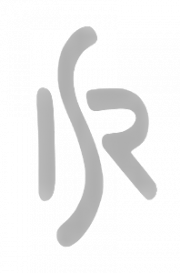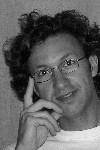| Acronym | SIPM |
|---|---|
| Name | Signal and Image Processing on Manifolds |
| Funding Reference | FCT - PTDC/EEA-ACR/73749/2006 |
| Dates | 2007-10|2010-09 |
| Summary | Most signal processing algorithms are developed within the framework of flat Euclidean spaces: the input/ouput data spaces of the processing system are vector spaces. This explains the pervasive presence of Linear Algebra in almost any signal processing technique currently available. However, several important real world problems do not fit into this simple linear framework. Commonly, the data lives in a nonlinear, curved set. In particular, it is often the case that the input/output data spaces are instances of a Riemannian manifold (a nonlinear, curved yet smooth, metric space). Representative examples: (i) wind-direction readings in metereology are time-series on the unit-circle (curved input space); (ii) estimation of the relative rotations of Earths tectonic plates leads to the nonlinear group of orthogonal matrices; (iii) subspace tracking based on multiple-antenna arrays is nothing more than inference on the Grassmann manifold. When dealing with problems which cannot be captured within the usual Euclidean framework, it is common to resort to ad hoc solutions or to attempt some local linear approximations: the underlying global Riemannian manifold structure is ignored. It is expected that new techniques exploiting this additional structure will significantly outperform current state-of-art solutions. These techniques should be rooted in the field of Differential Geometry (DG) as it provides a systematic framework to address a large class of nonlinear problems on manifolds. Successfull applications of DG techniques in signal and image processing have started to be reported in the past few years. A showcase can be found in several plenary and special sessions (dedicated to this topic) which have been held recently at the major signal processing conferences: the IEEE Int. Conf. on Acous., Sp. and Sig. Proc. (IEEE ICASSP 2005) Phil., USA and (IEEE ICASSP 2006) Toulouse, France and the IEEE Workshop on Sig. Proc. Advances in Wireless Comm. (IEEE SPAWC 2004) Lisbon, Portugal (sponsored by the NSF, USA). This indicates that the signal processing community has recognized the great potential of this mathematical framework (already proved fruitful in other fields of enginnering: control theory). This projects Principal Investigator (PI) was a participant in all the aforementioned special sessions. The broad aim of this project is to enrich the toolkit of the signal processor with a set of new tools which enable him to solve efficiently basic problems posed in manifolds, e.g., filtering, modelling, learning, optimizing a function, etc.This is to be accomplished by capitalizing on the expertise of the research team on the fields of manifold theory, wireless communications, image processing and advanced mathematics to develop both fundamental theory applicable to general engineering problems and to derive new algorithms for specific applications. Regarding fundamental theory, representative topics are: (a) performance bounds and (b) stochastic modelling. (a) In any given estimation problem, it is crucial to know the fundamental limit for the accuracy of estimators. These limits dictate what can/cannot be done for the given problem. Popular bounds, such as the Cramer-Rao bound (CRB), were derived under the assumption that the parameter space is a vector space. However, in most real-world applications, the parameter space is in fact a nonlinear Riemannian space. It is thus of interest to have the CRB analogue for manifolds. (b) In statistical signal processing, it is of primary importance to possess simple models for describing stochastic processes, e.g, the auto-regressive (AR) process. However, most available models strongly rely on the underlying linear structure of the Euclidean space (allowing to add points, etc). They are inadequate for real-world applications involving nonlinear observation spaces (e.g. the sphere) – the field of directional statistics [9] is filled with examples. A generalization of existing time-series models to manifolds is thus needed. Regarding particular applications to be covered, representative examples are: (a) computation of means and (b) optimization of nonsmooth functions on manifolds. (a) Centroid computation in a Riemannian manifold finds direct applications in medical image, blind source separation, etc. Existing techniques are gradient-based and hence exhibit only a linear convergence rate. In this project, we study Newton-like algorithms to achieve a faster, quadratic rate. (b) Minimization of a nonsmooth functions on a manifold is required in many applications, e.g., construction of space-time codebooks in wireless systems. Efficient solutions require the extension of standard Euclidean methods (e.g., bundle approach) to Riemannian manifolds. Manifold issues also arise in unconstrained nonsmooth optimisation, e.g. total-variation methods for image restoration, via the active set approach. |
| Research Groups |
Signal and Image Processing Group (SIPG) |
| ISR/IST Responsible | |
| People |




